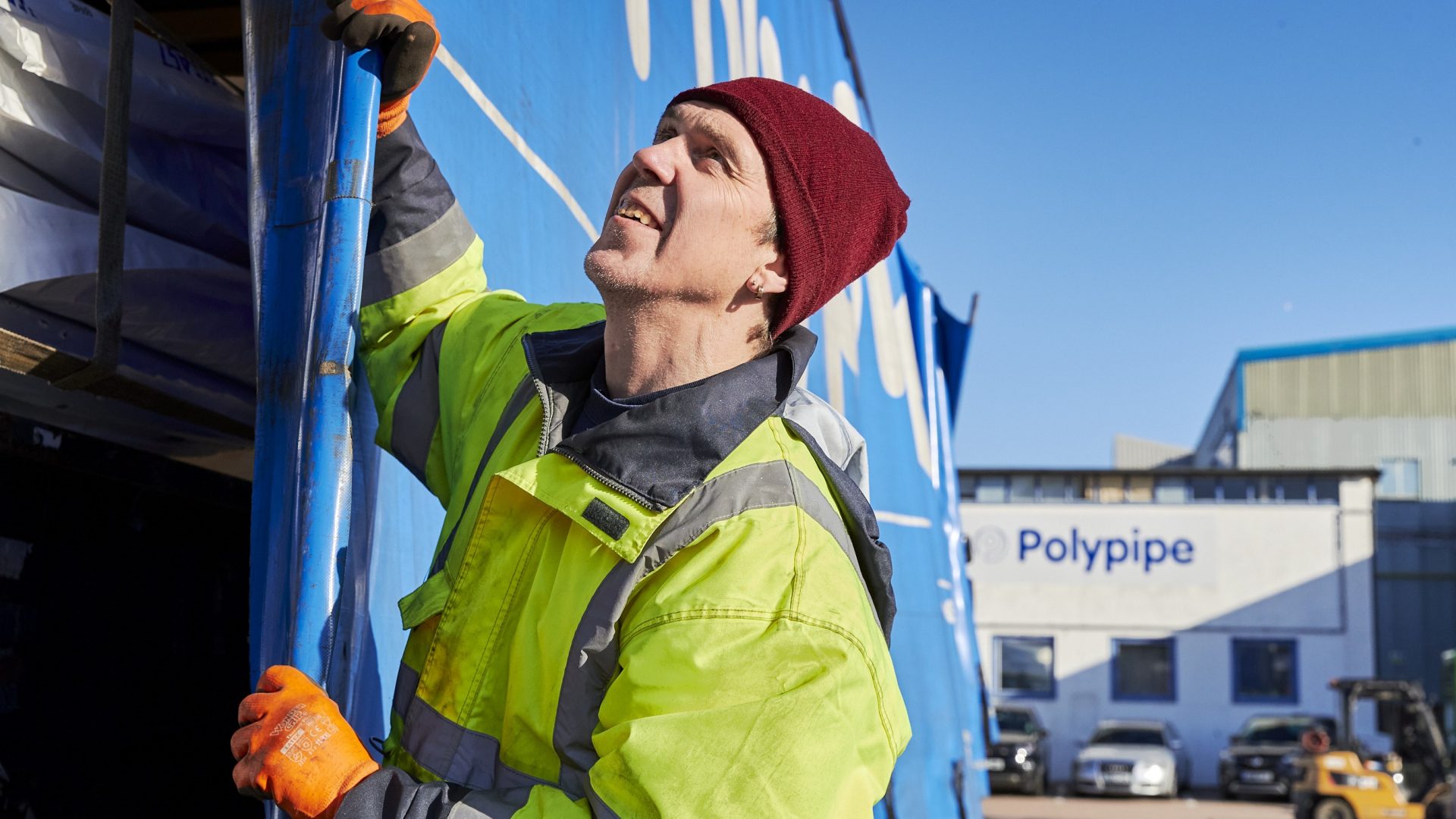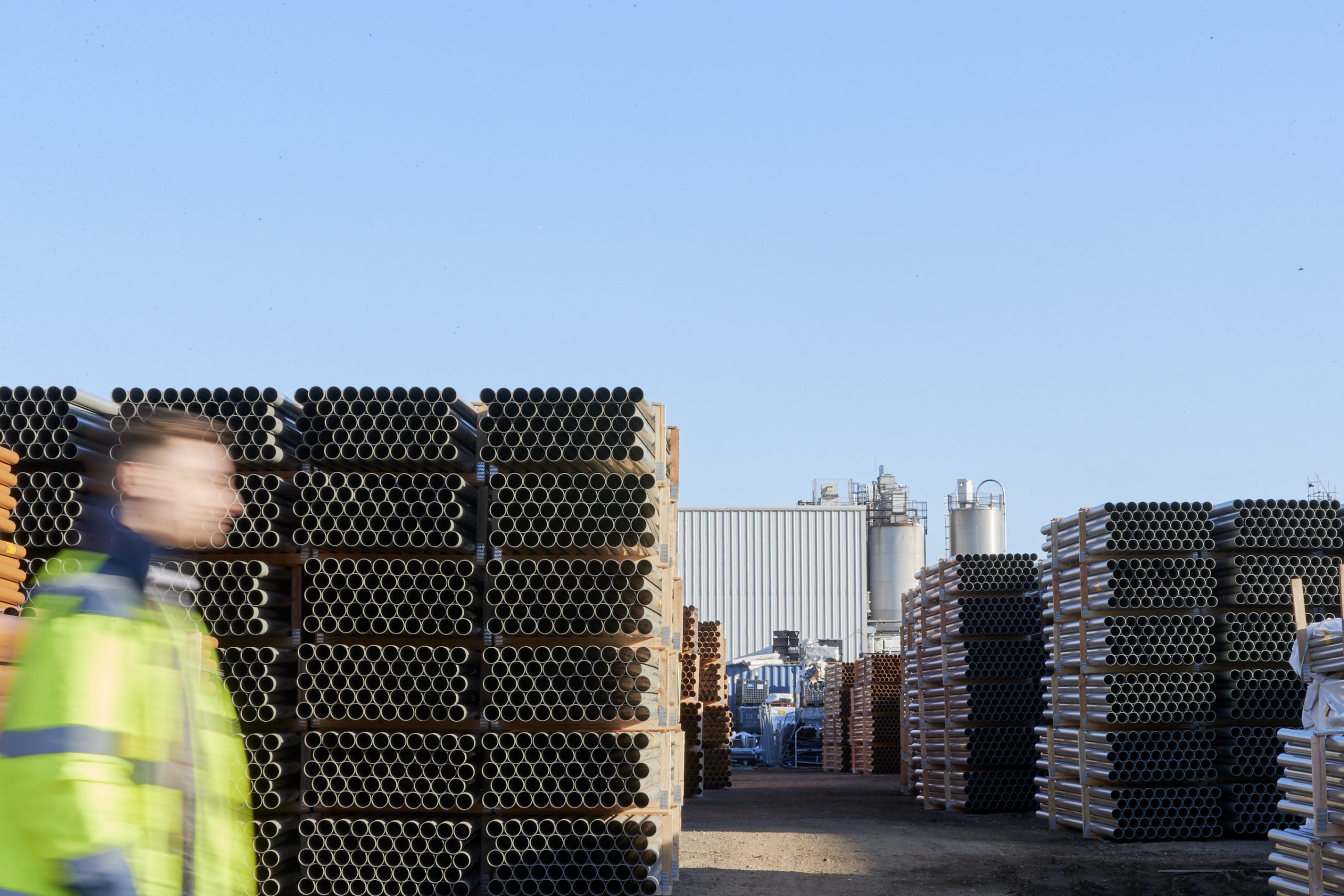
According to the UK Green Building Council, the built environment accounts for at least 25% of our country’s total greenhouse gas (GHG) emissions. This places a huge responsibility on the sector to ensure it is playing a full role in the government’s ambitious carbon reduction targets.
The water industry is, of course, not immune to this – the way in which water management facilities and networks are built, and the products used to do so, have an impact on the carbon footprint of the business operating them. This means that alongside managing and reducing the GHG emissions of their direct activities, water businesses must also be sure that the manufacturers of the products they use – such as drainage pipes – are working as hard as possible to minimise environmental impact.
An ambitious, structured approach is required from the entire chain serving the water industry in order to make this happen, not only in the more visible areas of GHG reduction such as energy usage, but in all areas of operations. The likes of waste reduction, recycling and moving to a circular model for as many resources as possible will be key. Here at Polypipe Building Services, we believe that manufacturers must play a central role in taking action and helping the following supply chain to make the biggest possible reductions.
Tackling GHG emissions
GHG emissions are typically categorised into three groups or scopes – Scope 1, Scope 2 and Scope 3. Scope 1 emissions are those generated directly by an organisation, for example the burning of fossil fuels in mobile (e.g., transportation) and stationary (e.g., boilers) combustion, whilst Scope 2 emissions are indirectly generated through the purchase of electricity, steam, heat or cooling that’s generated elsewhere. Scope 3, which generally accounts for the biggest portion of an organisation’s footprint, are those generated from indirect sources but driven by the demands and activities of the reporting organisation. This is a very broad category that covers all emissions outside of Scope 1 and 2. It’s important not only in how we measure our own footprint, but also how manufacturers like us remain mindful of our impact further up and down the supply chain, where our activities will generally be classed as Scope 3. In other words, whether it’s Scope 1, 2 or 3 for us, the benefit of reductions for our customers will be classed as Scope 3.
So how can emissions falling under Scopes 1 and 2 be minimised to the benefit of the broader supply chain? It’s important to see this as an ongoing, transitionary process rather than one monolithic shift – for example, company schemes to move from diesel to plug-in hybrid and eventually all-electric vehicles have a positive impact on emissions within the parameters of electric vehicle availability and capabilities. In the warehouse, electric counterbalance forklift trucks are now widespread enough for wholesale transitions away from gas to be made.
Where energy must be purchased from elsewhere, the first key step is to ensure power usage is minimised wherever possible. Beyond this, manufacturers should seek a zero-carbon supplier – here at Polypipe Building Services, along with the majority of the wider Genuit Group, we procure renewable energy via wind power through a Renewable Energy Guarantee of Origin (REGO) via wind power. We are also transitioning our entire car fleet to plug-in hybrid and electric vehicles only to decrease our mobile combustion carbon emissions. In the same capacity, at Polypipe Building Services we are now using biodiesel in our HGVs which have up to 80% less tailpipe carbon emissions.
Making product lifecycles more sustainable
Given Scope 3 emissions are by and large the biggest source of emissions, seeking to reduce these must be a core focus. Central to this is considering the full lifecycle of the products we make down the supply chain. How can the sourcing of raw materials minimise emissions during their production? How can our own production processes and equipment ensure minimal emissions are created? How can these products be made so that they provide maximum durability during their useful life, reducing the need for replacements? And when they do need replacing, how can the materials be reused as part of a circular economy to avoid the impact of their disposal as waste?
The first step here is to ensure that as an industry we avoid unnecessary waste, so that only what is needed is produced with minimal left over from construction work requiring recycling. Offsite and modular construction have an important role to play here as they require much greater precision in what materials are needed, when and how. Manufacturers who offer a design service can ensure they produce precisely what the contractor needs, avoiding waste on-site while optimising how quickly the job can be completed. We anticipate this to be one of the fastest growing areas of our business in the next few years.
If a circular economy is achieved for the waste that remains, then the challenges of using less virgin material and that of avoiding waste to landfill are intrinsically linked. More reusable materials re-entering the production process means lower demand for virgin material that would typically generate higher emissions to extract and process.
This is the case with an adjustment we recently made to our Terrain PVC pipes. By investing in a new production line capable of handling recycled PVC windows, we can produce soil and waste pipes with up to 65% recycled content without compromising on durability or performance. Not only does this mean we can reduce our reliance on virgin raw materials, but it will also reduce the volume of waste going to landfill. Being part of the Genuit Group, we have committed to the ambitious target of having 62% of all tonnage from recycled materials. This will significantly boost the UK’s circular economy, whilst reducing our scope 3 carbon emissions.
Our hope is that a fully circular process could be established for many of our products, and that the same is done across the full spectrum of building products manufacturers. If this can be achieved, the knock-on effect for the GHG emissions of building services contractors will be dramatically reduced. It’s important that this recycle and reuse outlook is applied across all operations. All offcuts from production should be reprocessed in house, whilst other waste materials including other plastic packaging and cardboard should be collected and sent to specialist recycling companies.
Furthermore, to maximise the amount of product that re-enters use we should look to build partnerships across the supply chain. We have recently begun a trial with one of our key merchant customers to make it as easy as possible for contractors to return PVC piping offcuts, obsolete products, plastic packaging, and bulk bags. These materials are picked up by our vehicles when empty on a return journey, further reducing emissions. Alongside avoiding general waste to landfill, this scheme has the potential to grow and provide an important route for waste PVC to be reused rather than disposed of.
Working together
Achieving a lower and eventually net zero carbon society is a responsibility we all must work towards. Water companies and their supply chain partners should be aware of the positive impact on sustainability that can be gained from working with product manufacturers who take this challenge seriously and are taking significant steps to reduce GHG emissions.




